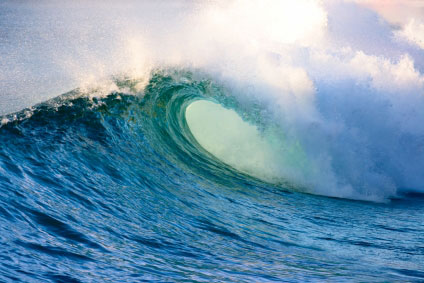West Coast Tsunami Threat Higher than Thought

The threat of a devastating tsunami hitting the U.S. West Coast might be higher than previously thought, scientists say, based on a new study of earthquake faults off the coast of Alaska.
Tsunamis are often triggered by earthquakes, as was the case with the 2004 Indian Ocean tsunami, which was sparked by the 9.3-magnitude Sumatra-Andaman subduction quake in the same ocean. The tsunami killed nearly a quarter of a million people.
The new research suggests that future tsunamis could reach a scale far beyond that suffered in a 1964 tsunami generated by the great 9.2-magnitude Alaskan earthquake — "the most devastating seismic sea wave to impact the northwestern coast of the U.S. in historical time," said study team member Ron Bruhn, a geologist at the University of Utah.
That tsunami killed about 130 people, according to official records: 114 in Alaska and 16 in Oregon and California, including several who heard it was coming and went down to the coast to watch.
Researchers looked at ancient fault segments off the coast of Alaska and determined that the rupture of an even larger area than the 1964 rupture zone could create an even bigger, more devastating tsunami.
While warning systems are in place on the West Coast of North America, the findings, detailed in the journal Quaternary Science Reviews, suggest a need for a review of evacuation plans in the region.
Past temblors
Sign up for the Live Science daily newsletter now
Get the world’s most fascinating discoveries delivered straight to your inbox.
A research team from Durham University in the United Kingdom, the University of Utah and Plafker Geohazard Consultants gauged the extent of earthquakes along the U.S. West Coast over the past 2,000 years by studying subsoil samples and sediment sequences at sites along the Alaskan coast.
The team radiocarbon-dated peat layers and sediments, and analyzed the distribution of mud, sand and peat within them. The data indicate that two major earthquakes have struck Alaska in the past 1,500 years — specifically, about 900 and 1,500 years ago. The results suggest that earthquakes in the region may rupture even larger segments of the coast and sea floor than was previously thought.
"Our radiocarbon-dated samples suggest that previous earthquakes were 15 percent bigger in terms of the area affected than the 1964 event," said lead author of the study, Ian Shennan of Durham University. "This historical evidence of widespread, simultaneous plate rupturing within the Alaskan region has significant implications for the tsunami potential of the Gulf of Alaska and the Pacific region as a whole."
The research was funded by the U.S. National Science Foundation, NASA and the U.S. Geological Survey.
Tsunami trigger
Tsunamis can be created by the rapid displacement of water when the sea floor lifts and/or falls due to crustal movements that accompany very large earthquakes. The movement acts like a giant paddle. The shallow nature of the sea floor off the coast of Alaska could increase the destructive potential of a tsunami wave in the Pacific.
Tsunamis are not always a given though: In 1899 and 1979, large earthquakes occurred in the region but did not trigger tsunamis because the rupturing was localized beneath the land instead of the sea floor.
But a quake whose effect is spread out over a longer distance could have a devastating impact.
"In the case of a multirupture event, the energy imparted to the tsunami will be larger but spread out over a longer strike distance," Bruhn said. "Except for the small communities at the tsunami source in Alaska, the longer length will have more of an effect on areas farther from the source such as southeastern Alaska, British Columbia, and the U.S. West Coast from Washington to California."
Pacific Ocean tsunami warning systems, first put in place in the 1940s and improved in 2004 after the Indian Ocean tsunami, help, but tsunamis could still do considerable damage. (No comparison was made between the potential future tsunamis and the Indian Ocean disaster, which happened in a different part of the Pacific Ocean.)
"Earthquakes can hit at any time of the day or night, and that’s a big challenge for emergency planners," Shennan said. "A tsunami in this region could cause damage and threaten life from Alaska to California and beyond."
- Video – Earthquake Forecasts
- Video – How to Survive the Coming California Earthquake
- Natural Disaster News, Images and Information










